What is Cultured Butter?
Cultured butter is butter that we make from cultured, fermented heavy cream. First, we add cultures, usually from yogurt, to heavy cream. Then we let it ferment before we churn the cream into butter.
If you add yogurt to cream, it ferments similarly to yogurt. The cultures in the cream develop a nice tartness and acidity and will also coagulate the cream a bit.
Not all cultured butter tastes the same, and the flavor depends on the cultures you use. Different types of yogurt will yield slightly different flavors.
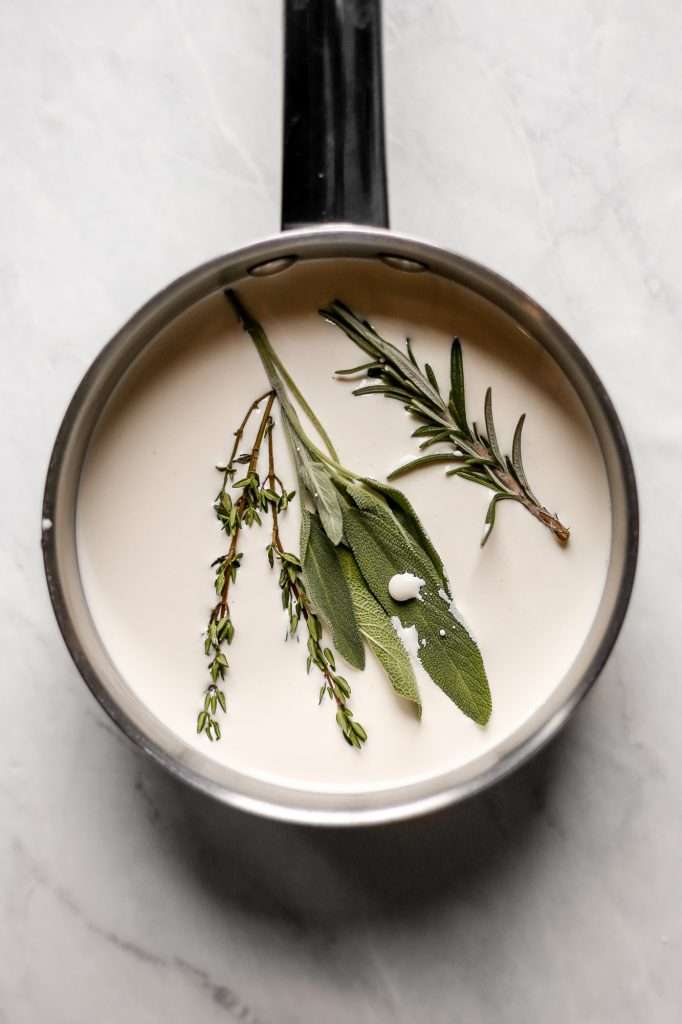
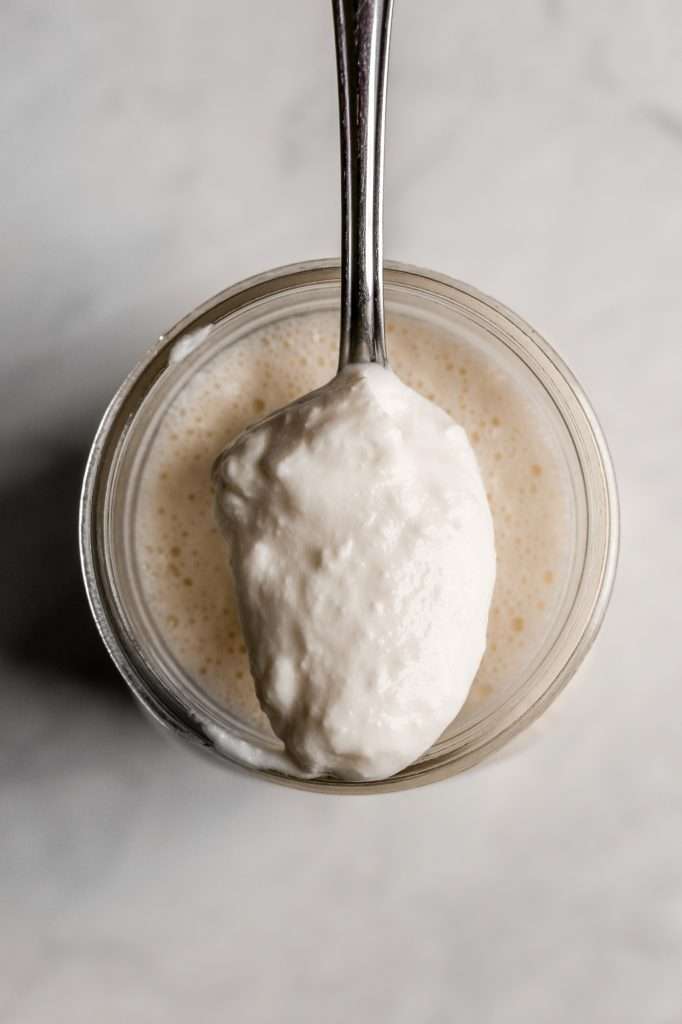
How Do We Make Cultured Butter?
If you’ve ever made regular butter, you will see that the process is almost the same. Though, there is one more step, the culturing step.
When making butter, you churn heavy cream until whipped cream forms, then until the whipped cream turns to butter. To make cultured butter, you only need to culture the cream before moving on to the regular butter-making process.
Many people say you can use many different cultures to culture the cream. However, I suggest sticking to yogurt cultures. I think homemade Greek yogurt works the best and gives the best flavor. Make sure the yogurt you use is plain and contains no thickeners or artificial ingredients.
When culturing the cream, you can ferment the cream with the yogurt for 24-48 hours. At 24 hours, you’ll get milder butter, and at 48 hours, more tart butter.
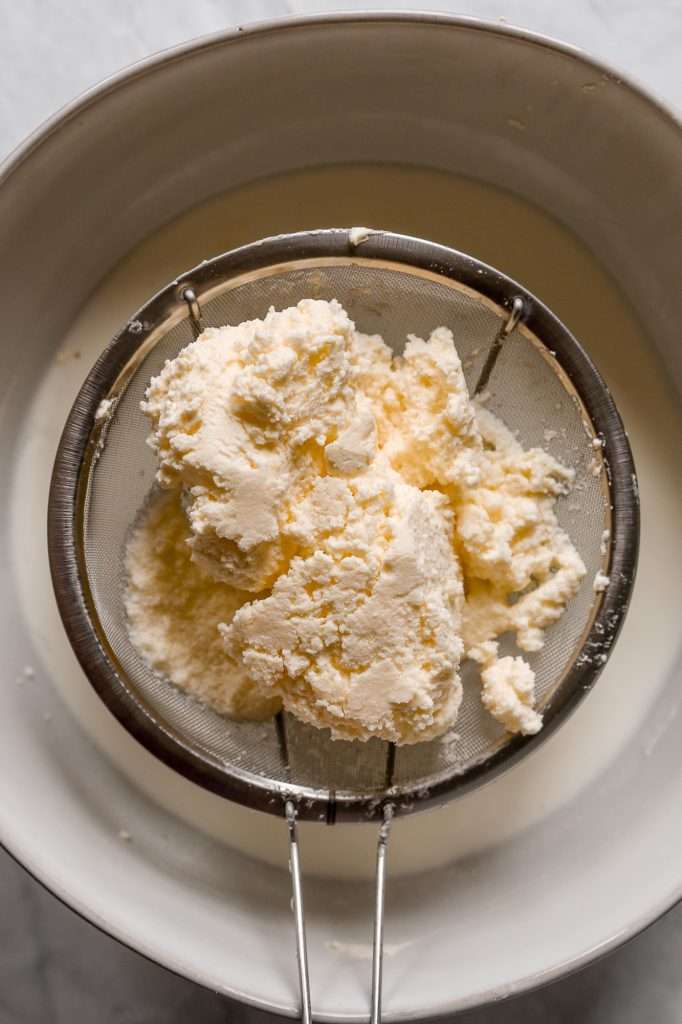
Cultured Butter Recipe
I hope many of you have access to fresh milk and cream. But if you are like me and have to buy cream from the store to make butter, check the ingredient panel.
Ensure the heavy cream you buy does not contain gums, stabilizers, or emulsifiers. Added ingredients like these make it challenging to turn the cream into butter. It’s not impossible, but it isn’t as easy. If you want to try making butter from cream that contains stabilizers etc., you’ll need to add ice-cold water to the whipped cream stage to get the butter to separate.
Here are all the ingredients you need for my recipe:
- 1-quart heavy whipping cream (NO stabilizers or emulsifiers)
- 2 tablespoons plain greek yogurt
- 1 sprig rosemary
- 2 sprigs thyme
- 1 sprig sage
- 1 tablespoon fermented lemon rind, rinsed and chopped
- 1/2 tsp salt (optional)

How to Make Butter in a Blender
I do not have a stand mixer, so I use a blender to make my butter. You can use a stand mixer if you have one.
To make butter in a blender, you first blend the cream until it becomes whipped cream. Continue to blend until large chunks form (that’s butter!). This takes between 2 and 10 minutes, depending on the blender. I have a Vitamix, and it took about 5 minutes.
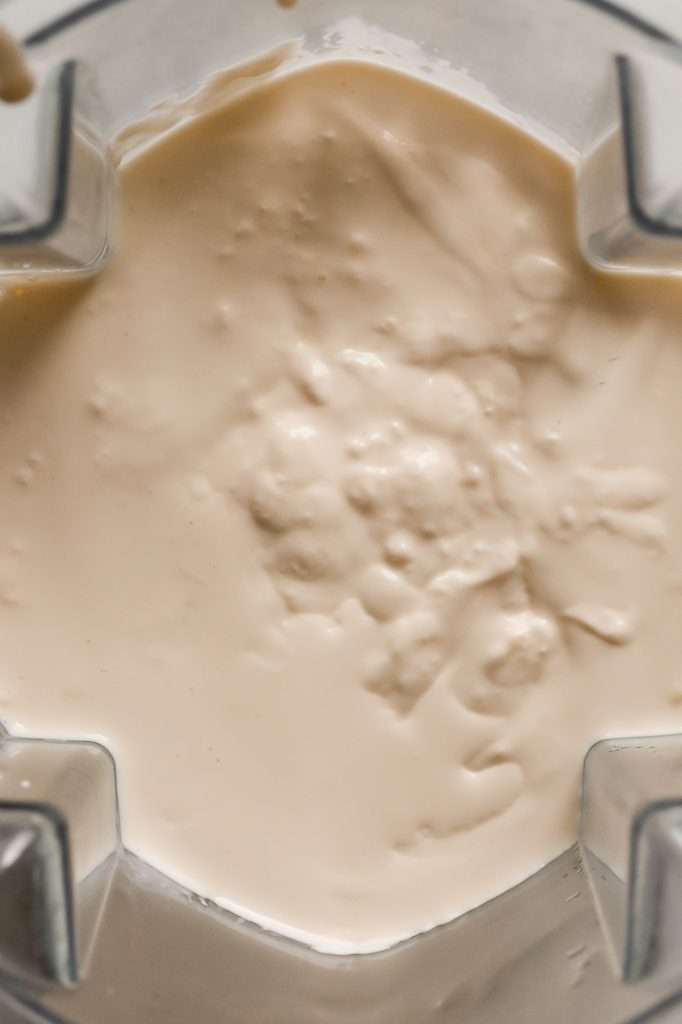


Lemon Herb Butter
I decided to infuse the cream with lemon and herbs before culturing. It turned out to be the most lovely, herbaceous butter. This butter is perfect for frying eggs, spreading on toast, or topping seared steak.
You can change up the herbs a bit and follow the same process, or leave out the herbs and lemon altogether. I personally want to try lemon pepper butter and honey butter next.

More Recipes to Try
- Raw Milk Yogurt Instant Pot Recipe an Easy Plain Whole Milk Yogurt
- How to Make Fermented Milk Kefir at Home
- Easy Whipped Miso Butter Recipe
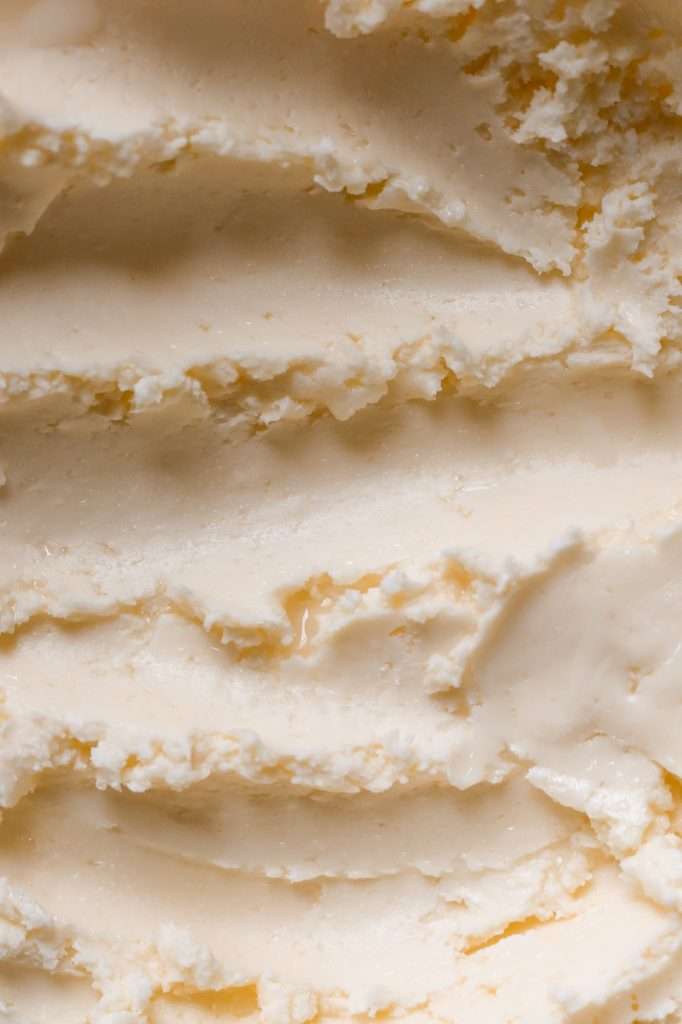
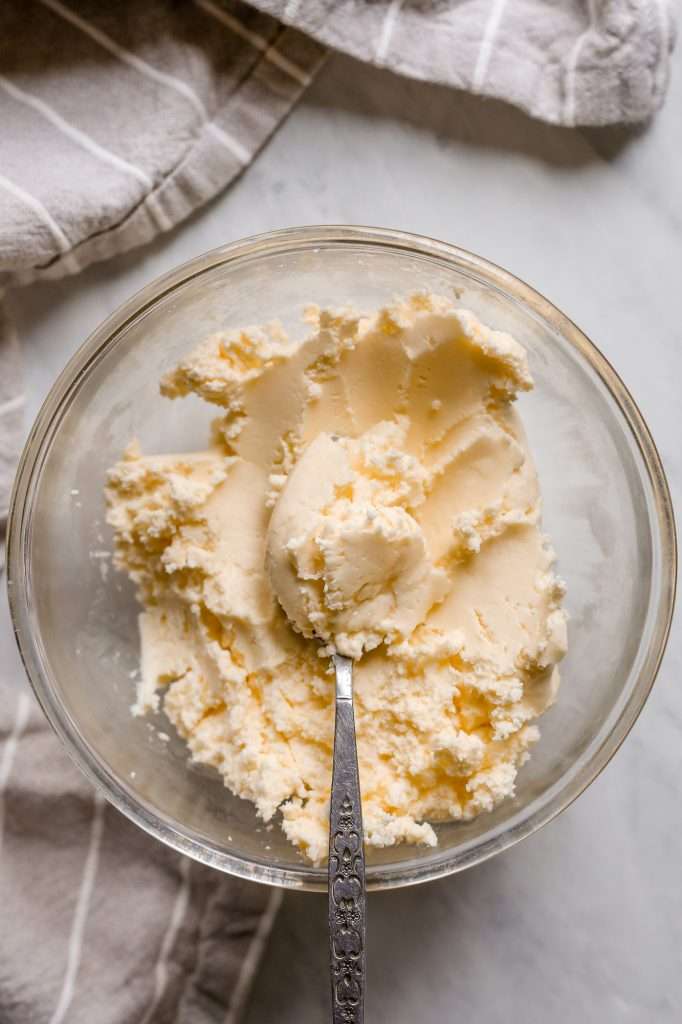
Homemade Cultured Butter with Lemon and Herbs
What is cultured butter? It’s homemade butter made with cream and yogurt. This cultured butter recipe teaches you how to make butter in a blender. Try this cultured lemon herb butter on seared steak, eggs, or toast.
- Prep: 30 minutes
- Cook: 10 minutes
- Total Time: 24 hours 40 minutes
Ingredients
- 1 quart heavy whipping cream (NO stabilizers or emulsifiers)
- 2 tablespoons plain Greek yogurt
- 1 sprig rosemary
- 2 sprigs thyme
- 1 sprig sage
- 1 tablespoon fermented lemon rind, rinsed and chopped
- 1/2 tsp salt (optional)
Instructions
- Rinse the herbs well and pat dry with a paper towel.
- Infuse the cream with the herbs and lemon by combining the herbs, lemon, and cream in a small pot. Heat with frequent stirring until it begins to simmer, then immediately remove from heat.
- Strain out the herbs and lemon, and transfer the cream to a large glass jar to cool.
- Culture the cream by combining the cooled cream and yogurt. Stir well to combine.
- Cover the jar of cream mixed with yogurt with a cloth lid. Allow the cream mixture to ferment at room temperature for about 24 hours. The mixture will thicken and become sour, similar to yogurt.
- Chill the cultured cream in the fridge for about 2 hours.
- Pour the cold cream mixture into your blender, and turn it on medium speed.
- Blend the cream until it becomes whipped cream and continue to blend until large chunks form (that’s butter!). This takes between 2 and 10 minutes, depending on the blender.
- Let it sit in the blender for a couple of minutes, and you will see the butter separated from the buttermilk.
- Pour the buttermilk into another container, using a mesh sieve to hold the butter back in the blender. (You can use the cultured buttermilk for baking)
- Add ice-cold water to cover the butter in the blender. Cover and pulse a few times until the water turns cloudy. Let it stand a moment to separate, then pour off and discard the liquid. Repeat four times until the liquid is primarily clear after blending.
- If you are salting the butter, add it now and pulse a few times to combine. Place the blender in the fridge and let the butter solidify.
- Drain off any more liquid. Once you’ve drained as much buttermilk liquid as possible, scoop the cold butter onto a folded 12 x 12 square of cheesecloth.
- Bring the edges of the cheesecloth together over the butter and squeeze any remaining liquid out of the butter with your hands.
- Scoop the butter out of the cheesecloth and store it in an airtight container in the fridge.

















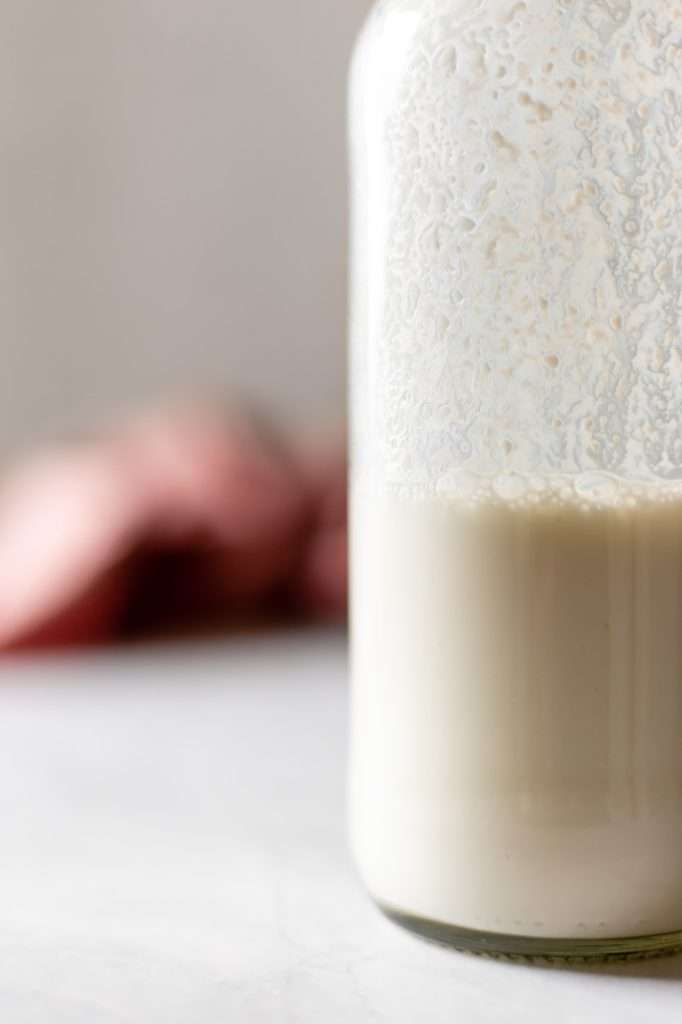


Hi Kaitlynn,
Why do we culture cream for butter at room temperature when we culture milk for yogurt at 40C?
I understand the fat content is different in each case, but we use yogurt to inoculate in both cases so the bacteria is the same.
Right, the bacteria are the same. But when making butter I don’t necessarily want the high protein and fat content of cream to coagulate a lot and turn into yogurt, because I want to churn it into butter. If I incubated it, it would turn into full on yogurt.
Hey Kaitlynn,
I haven’t been able to find heavy cream without stabilizers or emulsifiers, every one I check contains “Gellan gum”. Would this still be okay for this recipe? Thanks so much!
I actually used cream with gellan gum to photograph this blog post! So it is possible, but it wasn’t my favorite to work with.